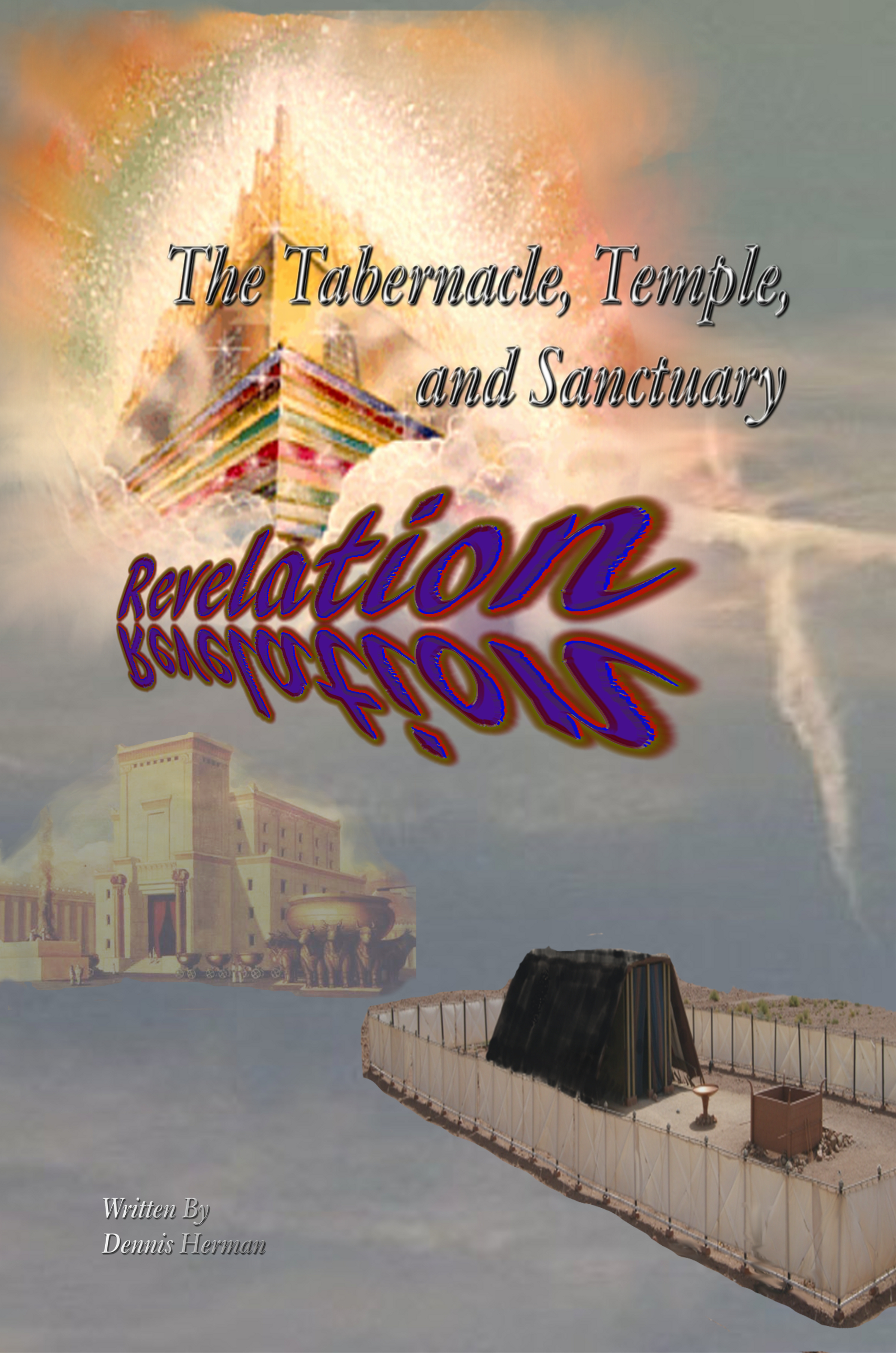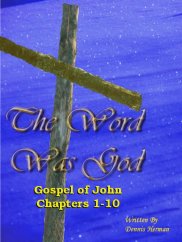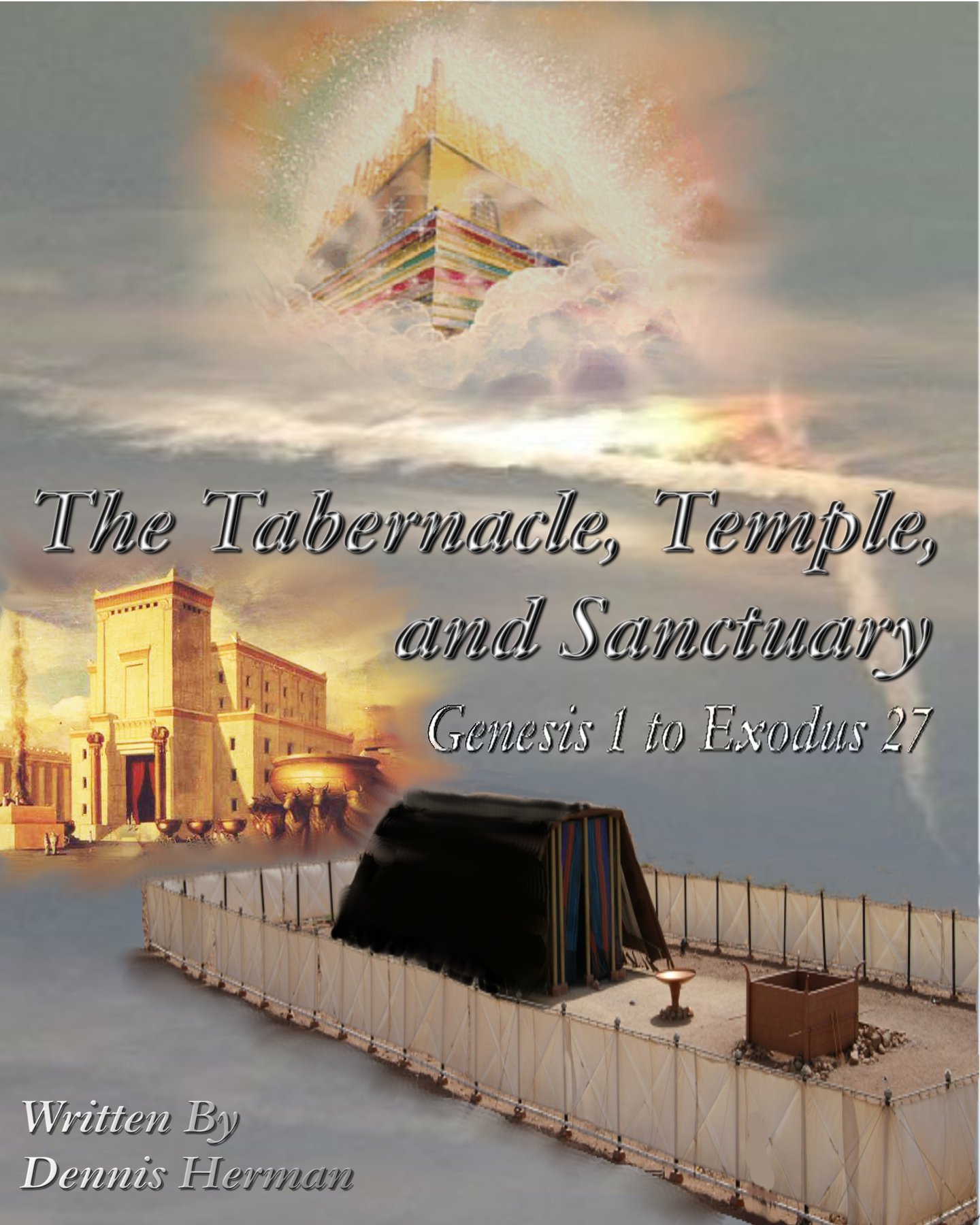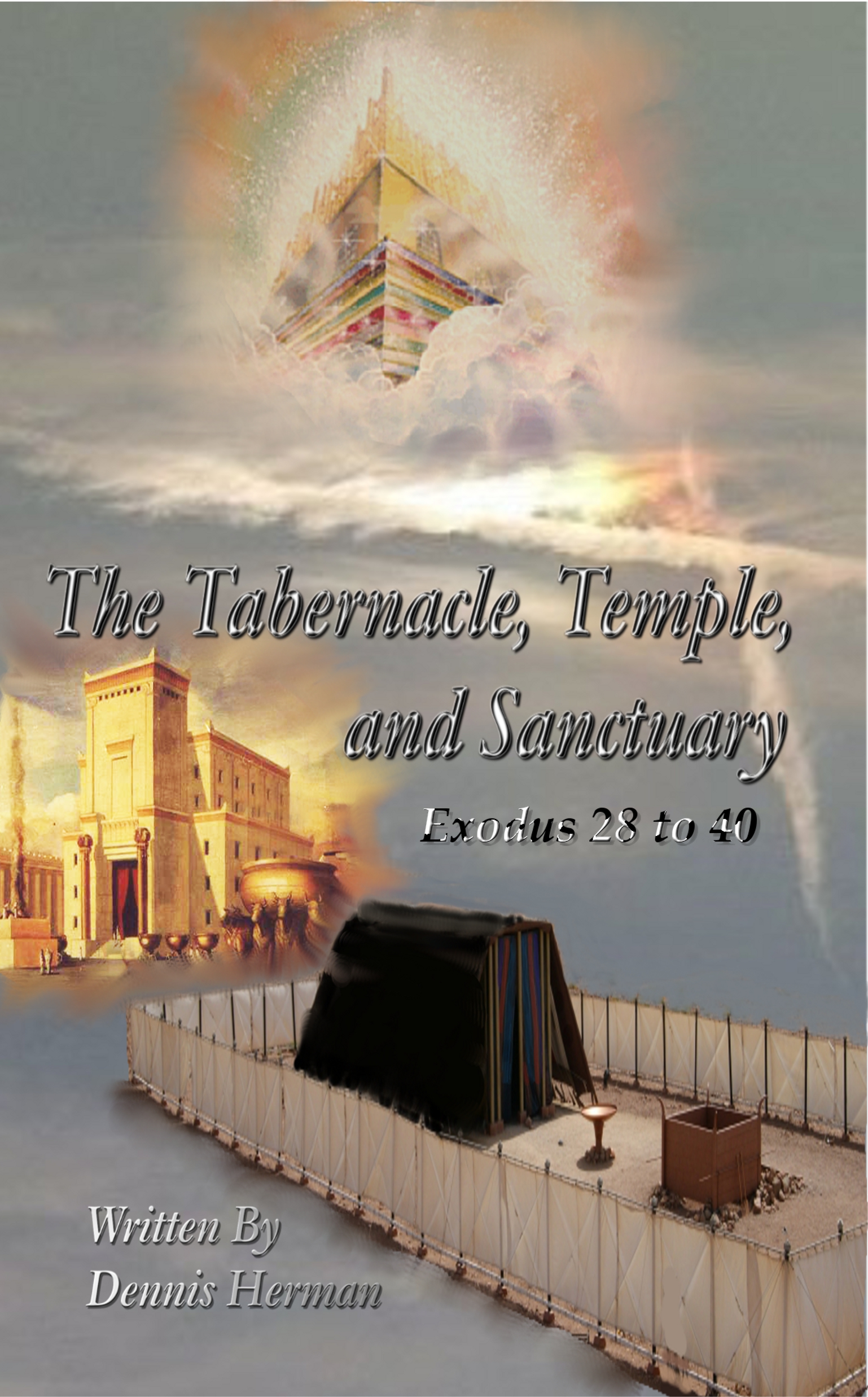The Tabernacle Chapter 3: The Labor
The first step in building any structure is to identify the use and purpose. The second step is to draw up the design. God was the designer of the Tabernacle. The design was given to Moses. The materials were procured in Egypt, and supplied by the Israelites. The next step would be to gather a work force.
It seems a little strange. God delivers Israel from bondage in Egypt. Shortly afterwards Moses was commanded to build an elaborate Tabernacle in the wilderness. Considering the basic design, the assembly of the Tabernacle required a number of skills, including detailed work in gold, silver, bronze, metal casting, sizing, polishing, and setting precious stones, cutting, forming, shaping, and assembling wood, weaving and sewing fabrics.
Some people may think the Israelites learned the skills necessary to produce all the items of the Tabernacle in Egypt. As slaves in Egypt, they did much more than work in mines, tilled fields, and serve in homes. Egypt also used slaves to weave cloth, sew elaborate clothing, fabricate artifacts, build homes, palaces, temples and entire cities. Were the skills learned in Egypt adequate to build God’s Tabernacle?
The skills learned in Egypt had nothing to do with God choosing Israel. God heard their groaning, and God remembered his covenant with Abraham, with Isaac, and with Jacob. (Exodus 2:24). God had chosen Israel long before they became slaves in Egypt. He loved thy fathers, therefore he chose their seed after them, and brought thee out in his sight with his mighty power out of Egypt; (Deuteronomy 4:37).
Skill had nothing to do with God’s choice of in many of His patriarchs. Although Abraham had the faith to offer his son, Isaac, he also made a number of mistakes along the way. Twice he lied about his wife, saying she was his sister. When God promised Abraham, his children and their offspring would be like the stars in the sky in number, Abraham followed his wife’s advice. Instead of relying on God, they decided to start a family with the help of Sarah’s Egyptian slave. Isaac was tricked into placing his blessing on the younger son, instead of the oldest. Or was it the wrong son? Jacob was the son, who tricked Isaac. Jacob was also tricked into marrying the older sister of the woman he loved. Jacob also followed the suggestions of his wives, and had children by their servants. It may be difficult to understand why God was faithful in rising up a chosen nation from these particular people.
God may have patiently watched his chosen leaders as they went through life, making mistakes, and displaying their faith, but Israel reached another vital moment in history. They were about to build a symbol of God’s Heavenly Sanctuary. Dozens of the items symbolized Jesus’ perfect life on earth. One would expect the quality of work would exceed all human expectations. Like all the details involved in the construction, God had a plan.
Exodus 36:1-4 Then wrought Bezaleel and Aholiab, and every wise hearted man, in whom the LORD put wisdom and understanding to know how to work all manner of work for the service of the sanctuary, according to all that the LORD had commanded. (2) And Moses called Bezaleel and Aholiab, and every wise hearted man, in whose heart the LORD had put wisdom, even every one whose heart stirred him up to come unto the work to do it: (3) And they received of Moses all the offering, which the children of Israel had brought for the work of the service of the sanctuary, to make it withal. And they brought yet unto him free offerings every morning. (4) And all the wise men, that wrought all the work of the sanctuary, came every man from his work which they made;
It is not unusual for us to be in a position where we need to forget what we have been taught before we are capable of serving God. Moses spent a number of years outside the palace courts of Egypt before he reached a teachable state. Paul spent years alone with God, before he was suited for his role of as an evangelist. The same is true when studying the Bible. Spiritual symbols must be interpreted spiritually, using the Bible and only the Bible. Only God designed the Tabernacle. The Spirit influenced the women as they borrowed from the Egyptians. God set the wisdom and skills in the hearts of the workers. Wouldn’t it seem logical, God had placed the spiritual interpretation for every detail in His Tabernacle within His written word?
This lesson was clearly illustrated when the women gathered the materials in Egypt. They went from home to home, even to stately homes, and palaces to gather tools and materials. Human nature would tend to gather only the most valuable material, gold, silver, and precious stones. They had no idea how far they would travel before reaching the promised land. They may have thought the journey would have lasted only a few days, maybe a week or two.
Based on the materials used in the Tabernacle, we know they gathered gold, silver, and precious stones. We do not know if they carried wooden planks out of Egypt, or fabricated the material on site. What about the curtains? Did the women collect the correct material, color, and textures in the proper quantities, or weave them on site?
Exodus 26:1-2 Moreover thou shalt make the tabernacle with ten curtains of fine twined linen, and blue, and purple, and scarlet: with cherubims of cunning work shalt thou make them. (2) The length of one curtain shall be eight and twenty cubits, and the breadth of one curtain four cubits: and every one of the curtains shall have one measure.
A cubic is roughly eighteen inches, or one and one half feet. This portion of the Tabernacle was made up of ten curtains. Each curtain was twenty eight cubits, or forty two feet long, by four cubits, or six feet wide. The total length of the ten curtains was four hundred and twenty feet, longer than a football field.
It is highly unlikely curtains were found in Egypt with the right color, texture, and quantity required. There were three colors used in the curtains. We are not told exactly what configuration was used on the curtains, if they were striped, a specific pattern, or if each curtain was a solid colors. If a specific color pattern was employed throughout the curtain, it is unlikely it was available in Egypt. That leaves one other option. The women collected tools and machines to weave curtains from raw materials? This would have required rolls of thread, in the proper color, or bundles of cotton to produce thread, along with dyes in the proper colors.
This is a possibility worth considering. Based on details found in the Bible, other items had to be fabricated on site. The boards used for walls were of a particular size. Tools were required to fabricate boards to the sizes given to Moses. The women gathering materials from the Egyptians also gathered the tools and machines required. They gathered everything required, because they were lead by the Spirit.
Once we understand God’s power, Bible study becomes easier to comprehend. Many people do not feel qualified, they do not realize, God has already supplied the required tools, and answers. Once a few simple methods are learned, dedication and time are the only skills a person needs to supply. Everything else has already been supplied, right in God’s written. All you need is the Spirit to guide you into all truth.
The skills to fabricate and erect the Tabernacle were given to two main characters, Bezaleel, and Aholiab. The Bible tells us, God also gave wisdom and understanding to every wise hearted man. I don’t think prior skills had much to do with their qualifications to work on the Tabernacle. The Bible shows the spiritual meaning of a wise heart.
And he hath put in his heart that he may teach, both he, and Aholiab, the son of Ahisamach, of the tribe of Dan. Them hath he filled with wisdom of heart, to work all manner of work, of the engraver, and of the cunning workman, and of the embroiderer, in blue, and in purple, in scarlet, and in fine linen, and of the weaver, even of them that do any work, and of those that devise cunning work. Who hath put wisdom in the inward parts? or who hath given understanding to the heart? My son, if thou wilt receive my words, and hide my commandments with thee; So that thou incline thine ear unto wisdom, and apply thine heart to understanding; Yea, if thou criest after knowledge, and liftest up thy voice for understanding; If thou seekest her as silver, and searchest for her as for hid treasures; Then shalt thou understand the fear of the LORD, and find the knowledge of God. For the LORD giveth wisdom: out of his mouth cometh knowledge and understanding. The heart of the prudent getteth knowledge; and the ear of the wise seeketh knowledge. The wise in heart will receive commandments: Bow down thine ear, and hear the words of the wise, and apply thine heart unto my knowledge. For it is a pleasant thing if thou keep them within thee; they shall withal be fitted in thy lips. That thy trust may be in the LORD, I have made known to thee this day, even to thee.
Exodus 35:34-35, Job 38:36, Proverbs 2:1-6, Proverbs 18:15, Proverbs 10:8, Proverbs 22:17-19.
It was not only men, who God employed in the construction of the Tabernacle, women also shared in the work. And all the women that were wise hearted did spin with their hands, and brought that which they had spun, both of blue, and of purple, and of scarlet, and of fine linen. And all the women whose heart stirred them up in wisdom spun goats’ hair. (Exodus 35:25-26).
It was important to have people dedicated to God produce the articles found within the Tabernacle. God employed people with a wise heart. They had to know the significance of every stitch, every curtain, and ring. As we have seen, God gave them skills to complete the work in a fashion worthy of the Creator of the universe. Human wisdom had little to do with the skills required. Spiritual wisdom and dedication had everything to do with the skills required to work on the Tabernacle. The mind had to be directed to God, for the Holy Spirit to guide the work.
When we look at the details of the Tabernacle, we can begin to understand why God needed workers with a perfect heart.
Exodus 25:20 And the cherubims shall stretch forth their wings on high, covering the mercy seat with their wings, and their faces shall look one to another; toward the mercy seat shall the faces of the cherubims be.
Exodus 25:31 And thou shalt make a candlestick of pure gold: of beaten work shall the candlestick be made: his shaft, and his branches, his bowls, his knops, and his flowers, shall be of the same.
Exodus 26:1 Moreover thou shalt make the tabernacle with ten curtains of fine twined linen, and blue, and purple, and scarlet: with cherubims of cunning work shalt thou make them.
Exodus 26:7 And thou shalt make curtains of goats’ hair to be a covering upon the tabernacle: eleven curtains shalt thou make.
Exodus 26:14 And thou shalt make a covering for the tent of rams’ skins dyed red, and a covering above of badgers’ skins.
Exodus 27:1 And thou shalt make an altar of shittim wood, five cubits long, and five cubits broad; the altar shall be foursquare: and the height thereof shall be three cubits.
Exodus 28:4 And these are the garments which they shall make; a breastplate, and an ephod, and a robe, and a broidered coat, a mitre, and a girdle: and they shall make holy garments for Aaron thy brother, and his sons, that he may minister unto me in the priest’s office.
Exodus 28:15 And thou shalt make the breastplate of judgment with cunning work; after the work of the ephod thou shalt make it; of gold, of blue, and of purple, and of scarlet, and of fine twined linen, shalt thou make it.
The Tabernacle was made up of a list of symbolic articles. If God would have used people, who were not influenced by the Spirit to work on the items He designed, who knows what may have been the result. Maybe the Tabernacle would have been completed to specifications, but the labor was also meant to teach a lesson. We have to remember, everything in it was fashioned after the contents of a spiritual building, the Heavenly Sanctuary. The symbolism is the important detail of the Tabernacle.
Looking over the symbols in the above texts, it should not be very difficult to notice a few articles which have been used to symbolize a number of things not associated with the Tabernacle. For instance, alters have been used by a number of religions to represent a number of gods and deities. They have been used for ceremonial offerings, and sacrifices of all types. God needed workers with a pure heart, and faith in the designer, so they would not create, and teach their own perceptions of the symbolism used, by pass along the lessons taught by Moses.
Don’t forget, these people were born and grew up in Egypt, where they faced constant influences from a pagan culture. The sun represented one god, the moon another. A number of animals, cows, goats, lions, eagles, even jackals, and frogs, represented gods. They came from a society where geometric symbols were thought to have mystical powers. The last thing God needed, was a group of workers worshiping the symbols employed in the design of the Tabernacle, instead of the Designer. The workforce chosen to make the Tabernacle had a much more important bearing than most people would consider.
At that point in history, God was having more than a Tabernacle constructed. God was installing an order of worship. Every physical detail, as well as every ceremony pointed to Christ, His ministry on earth, His sacrifice, and work in the Heavenly Sanctuary. The labor and leadership of those workers was as important as that of the disciples Jesus trusted to continue His ministry. Jesus’ message and those taught by the Tabernacle are one of the same.
Next Chapter: The Tabernacle Chapter 4: The Foundation
I would like to continue to leave this information on the Internet for free based on the simple fact, there is such a great number of people all over the world who cannot afford to purchase the book. If that’s the case, I can email a few copy of the entire book for free.
Material may be copied and shared with permission at AdventBible@gmailcom. Please include the following information:
© Copyright 2009 – 2013 Dennis Herman
https://adventbiblestudy.wordpress.com/
The entire book is available as an eBook download. Click the cover to link to the sale site.























adventbiblestudy said
ATTENTION PLEASE. ALL SALES ON THE TABERNACLE IN OCTOBER 2013 WILL GO TO SUPPORT THE BATTLE CREEK TABERNACLE YOUTH TRIP TO FLORIDA. PLEASE CONTRIBUTE. CLICK THE BOOK COVER AD ON THE LEFT. THANK YOU!!!!
LikeLike